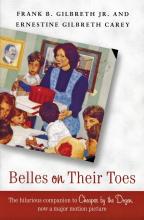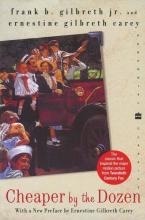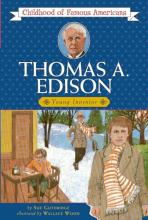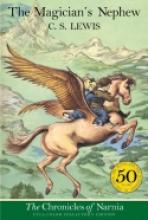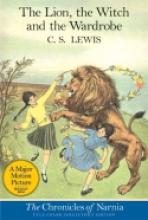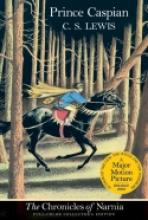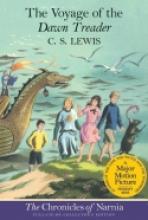No name
Belles On Their Toes
This sequel to Cheaper by the Dozen is, if anything, even more hilarious. Both share a realism that only a true story can acquire. After Frank B. Gilbreth's death, his wife Lillian takes over his business as an efficiency engineer, traveling to conferences and teaching students in her home. The 11 Gilbreth children are growing up, and manage to find a hilarious situation in each new experiences. As usual, the Gilbreth family faces cigarettes, garden fertilizer, one piece bathing suits, and meetings with the president with equal aplomb and humor. This book is primarily the story of 'Mother', and the Gilbreths after their father's death. I recommend reading it after Cheaper By The Dozen for that reason. Both books contain examples of the prejudices and attitudes of the 'teens and 'twenties, and provide many opportunities for learning experiences.
Video/DVD: This book was made into a movie in 1952. It diverts more from the book than the Cheaper by the Dozen movie, and has taken the form of a musical. It is available on DVD.
Cheaper by the Dozen
It's the Jazz Age, roadsters are the rage, and an engineer in Massachusetts is raising a vibrant family of 12 children. Welcome to the world of the Gilbreths, where everything comes 'cheaper by the dozen'.
Frank B. Gilbreth originated the science of 'motion study', to improve efficiency. He and his wife Lillian collaborated happily on books, factory layouts, and their large family. This book is essentially a family biography written by two of the Gilbreth children. Uproariously funny for families of any size, Cheaper By The Dozen will be particularly fun for homeschoolers to read. Mr. Gilbreth takes an active part in the children's education; painting glow-in-the-dark constellations on the ceiling and playing foreign language records during 'unavoidable delay' in the bathroom. Nuisance boyfriends, tonsil removal, and new babies are mundane occurrences at the Gilbreth home, and Father uses every event to teach science, and efficiency. The results are predictably hilarious.
Poignant, memorably funny, and always realistic, Cheaper By The Dozen can be read out loud or on its own. It is a genuine experience of life in the early 1900's, with all the attitudes and prejudices of that era, and will be a learning experience for your whole family.
Note: There is an instance of profanity in Chapter 2 which can easily be edited by a proofreading parent.
Video/DVD: This book was made into a movie in 1950 and is one of our family's favorites – a real classic. It is available on DVD.
Thomas A. Edison: Young Inventor
This is a fascinating and often humorous story of one of the most renowned inventors of all time. As a boy, Edison was fascinated by the world around him and full of questions about everything. Although he had many mentors as a boy, his first grade teacher reacted so negatively to his natural curiosity that his mother took him out of school and taught him at home. His adventures involving chemistry, trains and printing newspapers make for enjoyable and interesting reading. Edison was clearly a boy of creativity and ingenuity and a positive role model for children of today in sharing Edison's scientific interests and natural curiosity. My six year old boy, in particular, was completely enthralled when we read this story aloud.
Copyrights 1947/1959. Several later printings.
The Chronicles of Narnia
The Magician's Nephew
At first glance, this is a story of magic, drama and journeying to other worlds. Digory and his friend Polly, who live in London in the early part of the 20th century, accidentally discover some weird experiments being performed by Digory's Uncle. Too cowardly to test out his own experiments, he sends them off unwillingly to an adventure in an unknown world.
They find themselves in an enchanted place - a "wood between the worlds" - a quiet, peaceful place filled with trees and pools of water. They soon discover that each pool will take them into a different "world." When they decide to explore one of these worlds, their real adventure begins - and they're in for a wild ride.
The story is, primarily, about the founding of a new world - Narnia. The two children witness its creation and its initial struggles with evil - not unlike those of our own world. Naturally, it presents some of the history that leads up to the Lion, the Witch and the Wardrobe as well.
Like the Lion, the Witch and the Wardrobe, children need not be fully aware of the story's allegorical significance in order to enjoy and benefit from the story. On a simpler level, the story highlights truths about character and consequences that will remain with them for a lifetime.
The Lion, the Witch and the Wardrobe
Four British children - Peter, Susan, Edmund, and Lucy, are taken to the country to live with an old Professor during World War II, as London was quite unsafe for children. The professor is somewhat eccentric, but kind, and permits them to explore his large estate. While hiding in an old wardrobe, the youngest, Lucy, is amazed to discover that there is no back to the wardrobe - as she pushes past more and more coats, they become scratchier and colder and she begins to realize that she's no longer in a wardrobe. She's in the middle of a snowy forest. Lucy has discovered a strange, unknown world where amazing adventures await her and her siblings.
Long beloved by children the world over, this is a tale of innocence, difficult lessons learned, adventure, friendship and love. Underneath and not immediately apparent to children is an allegory. Some truths about our own world can be seen more clearly through a story that takes place elsewhere.
Narnia is in the grip of the White Witch. Although she promises happiness and delightful things, those who follow her are miserable, and the entire land is immersed in an eternal winter - always winter and without Christmas. The mysterious Aslan, a lion who is greatly feared by the witch, comes to Narnia and things begin to change.
Most parents will quickly realize that Aslan is a figure for Christ who saved the world from the tyranny of sin and death (represented by the witch). There are many interesting details that correspond with this allegory. Although I read the series many times as a child, I wasn't fully aware of the allegorical significance until much later. I wouldn't spoil it for children by sitting down and explaining it to them. The Christian allegory will probably be more meaningful if they are permitted to discover it for themselves.
The story (as well as others in the series) is appropriate as a read-aloud even for rather young children and is written at a mid-grade-school reading level. (Strong readers may be interested in tackling it even earlier.) The book is most powerful, I think, when it can be first introduced in the very simple way that young children enjoy such a book.
The Horse and His Boy
Prince Caspian
The author puts you right in middle of a thrilling adventure; made more mysterious because children now are looking upon their previous adventures as "ancient history". For my oldest daughter, reading this in early grade school kindled an interest in history and a reverence for "old things" that has remained quite strong years later.

